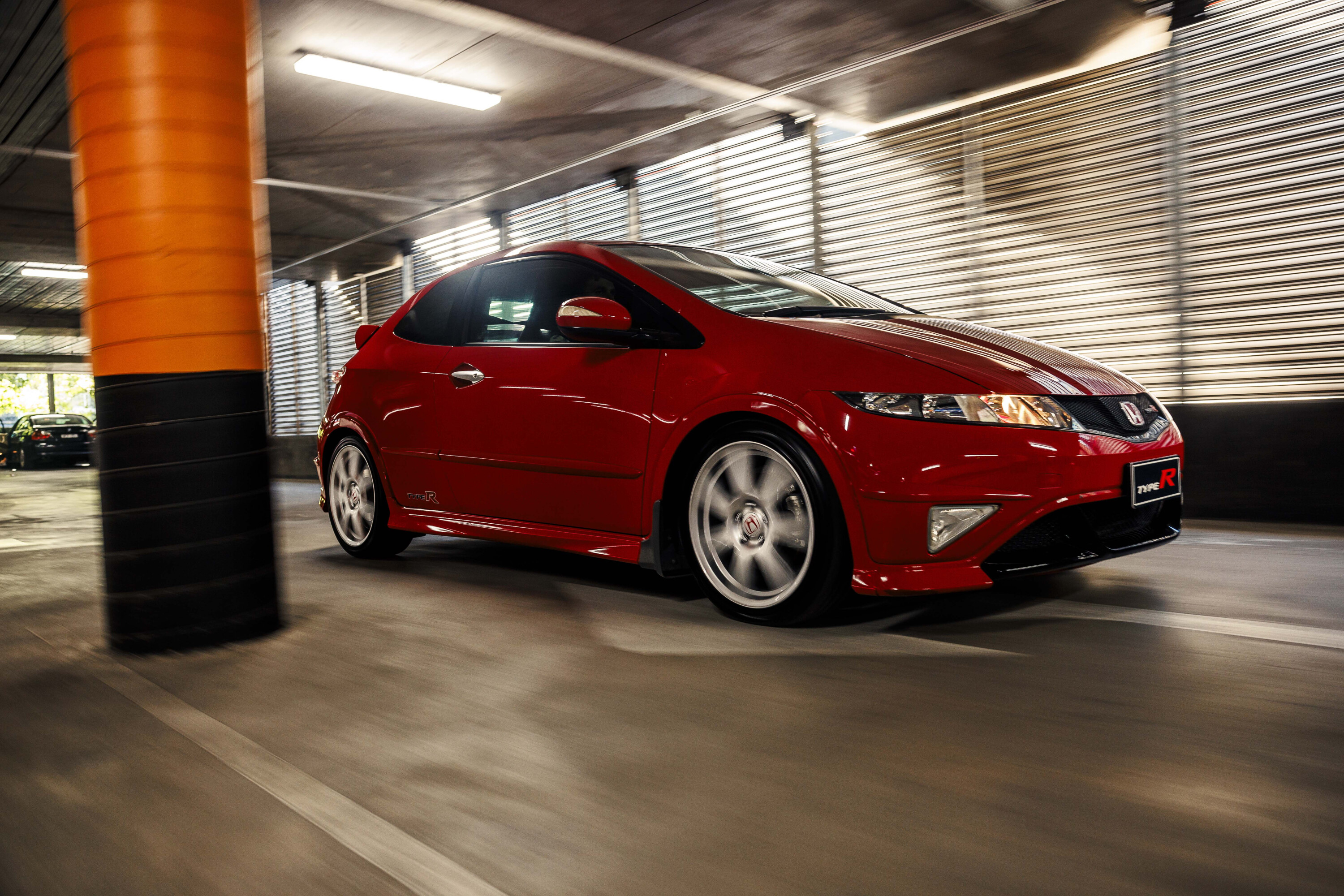Were you to believe everything you read on the internet, you’d know that this is the worst Civic Type R that Honda ever built.
The FN2 has no diff, no torque and no independent rear suspension. It’s around 100kg heavier than its predecessor, the breadvan-shaped EP3, with no added power. “It just doesn’t feel that quick,” said Jeremy Clarkson on Top Gear, adding “all the poise and controllability that you used to get in the old car is just sort of… gone”.
Wheels threw the FN2 Type R into two big sports car tests. It came last at the 2008 Handling Olympics and was slowest around Haunted Hills in a hot hatch megatest in March 2011.
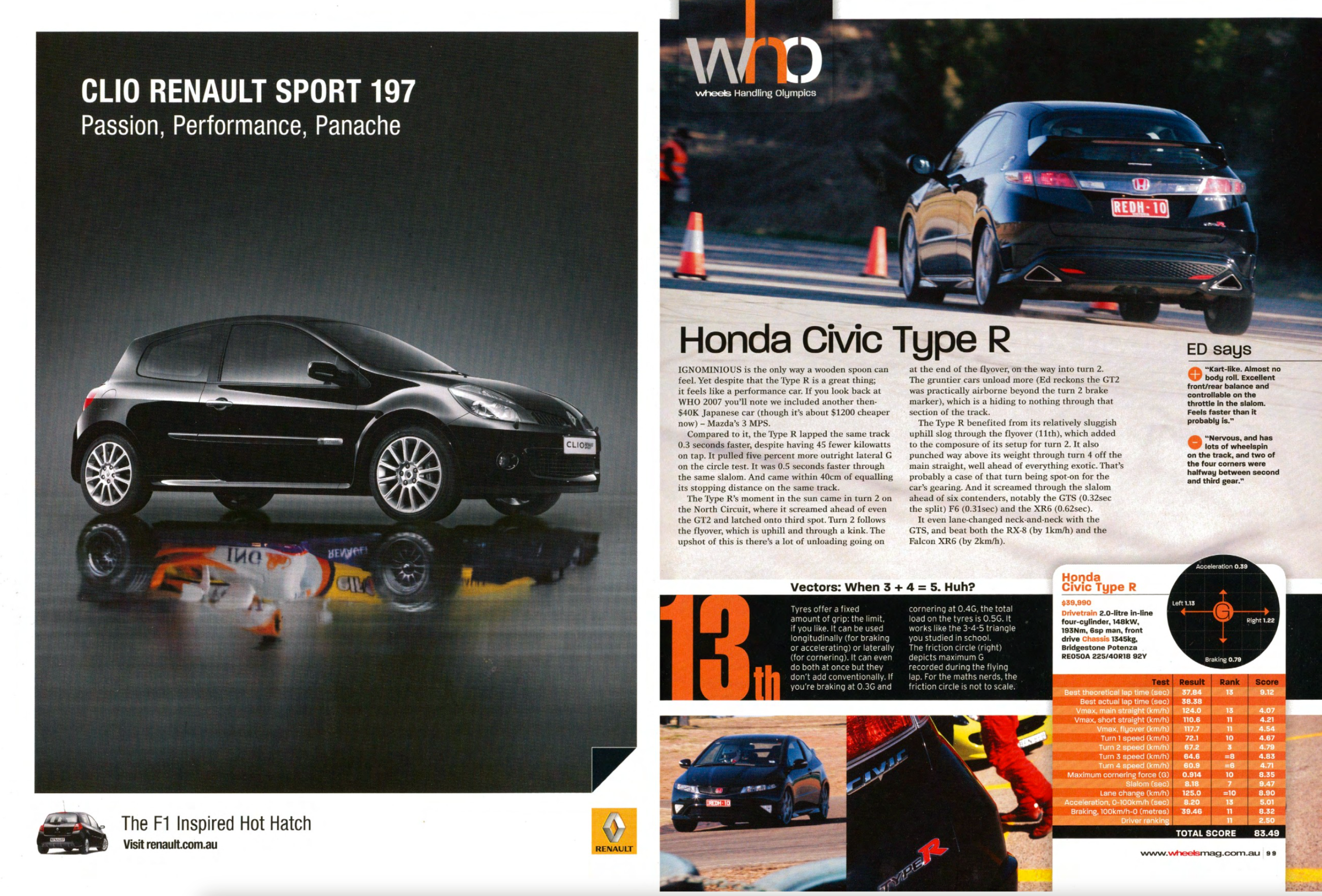
So what went wrong? And why is this car even here when it’s clearly the runt of the CTR litter? Hindsight and perspective – those two luxuries we are now afforded – frame this Civic in a very different light.
It’s the last of the normally aspirated screamers, which explains why it was slower around Haunted Hills (the clue is in the name) than its torque-rich turbocharged brethren.
So while its 193Nm is less than you’d get in your holiday hire Hyundai i30 (and less than half the quota of a current Civic Type R), there are a number of compensations that we once took for granted. Things that we dearly miss today.
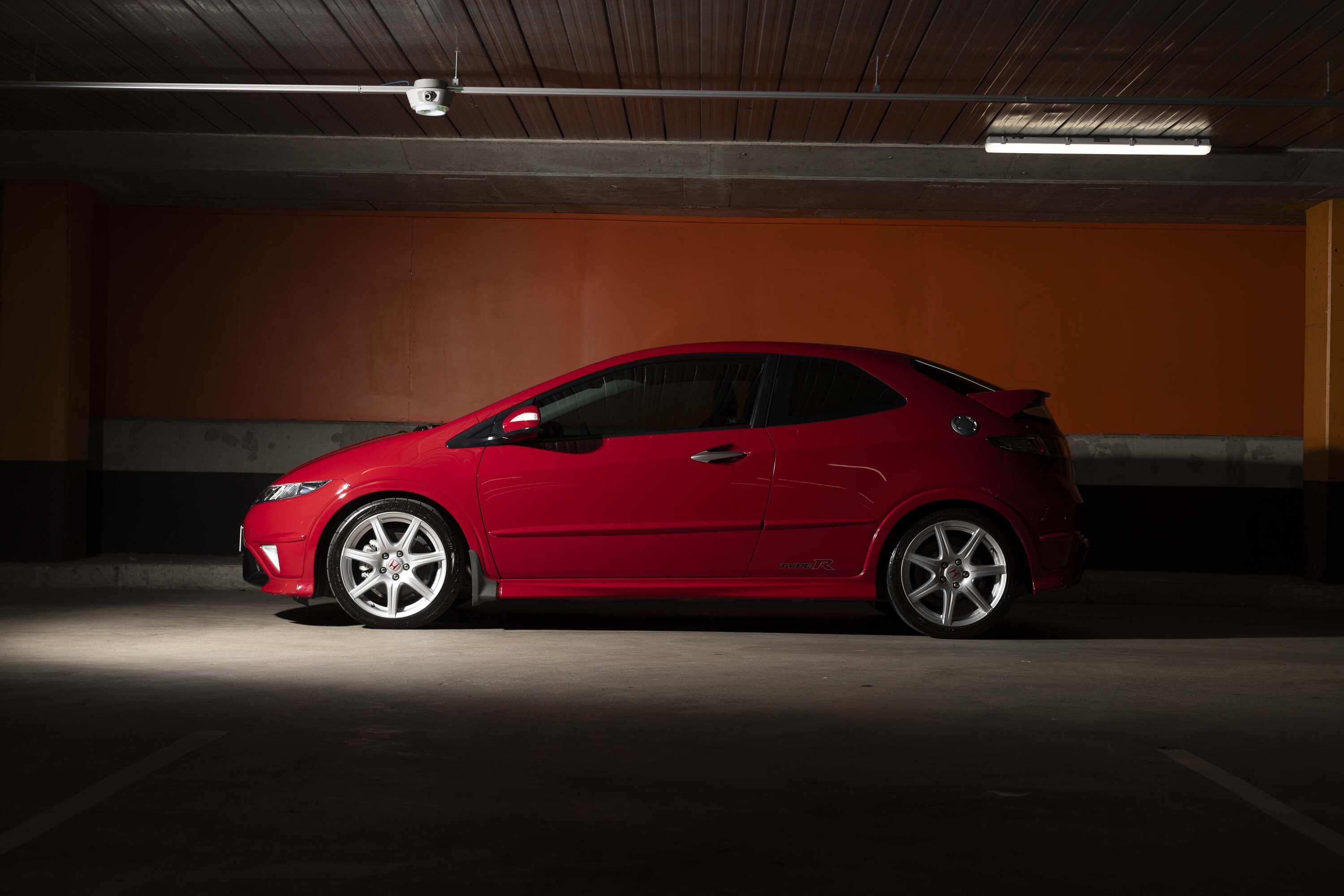
Try finding a modern hot hatch with a characterful engine (a barrage of manufactured exhaust pops or dual-clutch tromboning doesn’t count).
Once you’ve done that, refine your search further by finding one with a beautiful manual gearbox. I’ll save you some time. That car doesn’t exist. Granted, a pair of what some may view as anachronisms don’t confer worthiness in and of themselves, but there’s more to the Civic.
When we take a look at its rivals in that 2011 review, almost all have been replaced by incrementally better versions of their ilk. You can buy something from the same marque that’s cut from ostensibly the same cloth that’s newer and better.

Why buy a MkVI Golf GTI when the MkVII is a big improvement? Same goes for the Megane RS 250. Buy a 265 or a 275 instead. You’ll have more fun. But the Civic? It changed. Tester Jimmy Whitbourn found it old hat in that company. Probably rightly so.
“At launch in mid-1997, the Type R looked futuristic but the look – inside and out – has dated, along with its approach to performance,” he noted. “Volkswagen’s benchmark for hot hatch liveability – the Golf GTI – delivers its performance effortlessly; in the Civic you really have to work for it.”
In the interim, we’ve become accustomed to EVs that can accelerate to 100km/h in two seconds and change. Instant gratification is available on demand, with the result that we now treasure those cars that sing like the Civic. It’s part of the reason why the 911 GT3 has become so revered.
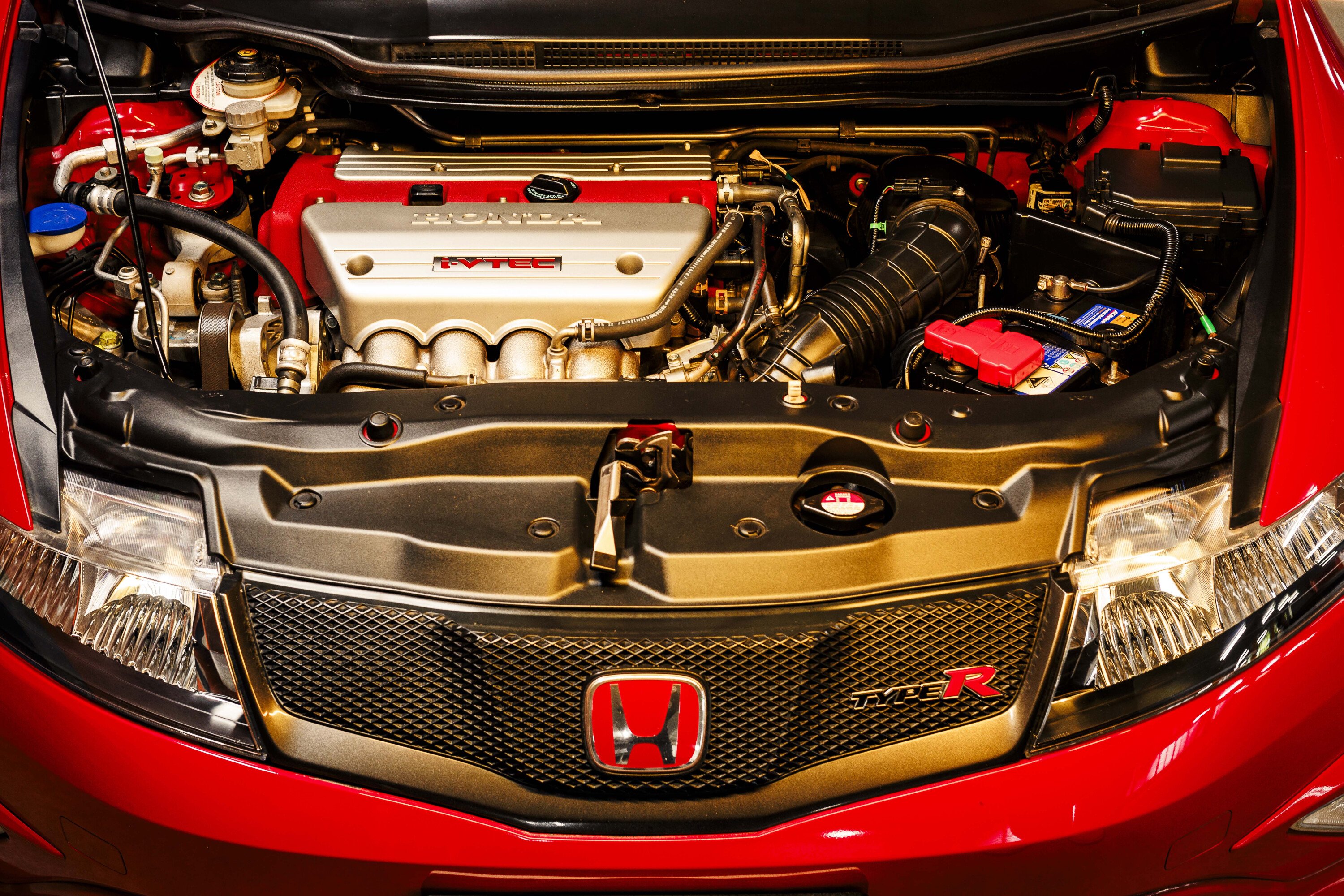
It’s a delightful gearbox – maybe not S2000 slick, but probably the equal of any manual shift offered today
We just couldn’t have anticipated that in 2011, when turbocharging appeared the answer to every question.
To that end, a naturally aspirated Civic Type R has only seen its stock rise in recent years, and this FN2 model was the last of that particular line. That’s why a car that finished flat last in those big comparison tests is now starting to pique the interest of collectors.
The true anoraks among you will know that while we got the British-built FN2 hatch, in Japan there existed a very different beast, sold for the same 2007-2011 period.
The FD2 was a four-door sedan, riding on an 80mm-longer wheelbase and featuring more grunt (165kW/215Nm versus 148kW/193Nm), a Torsen diff and independent rear suspension. It’s a superior car, but it’s not the Type R many of us grew up with.
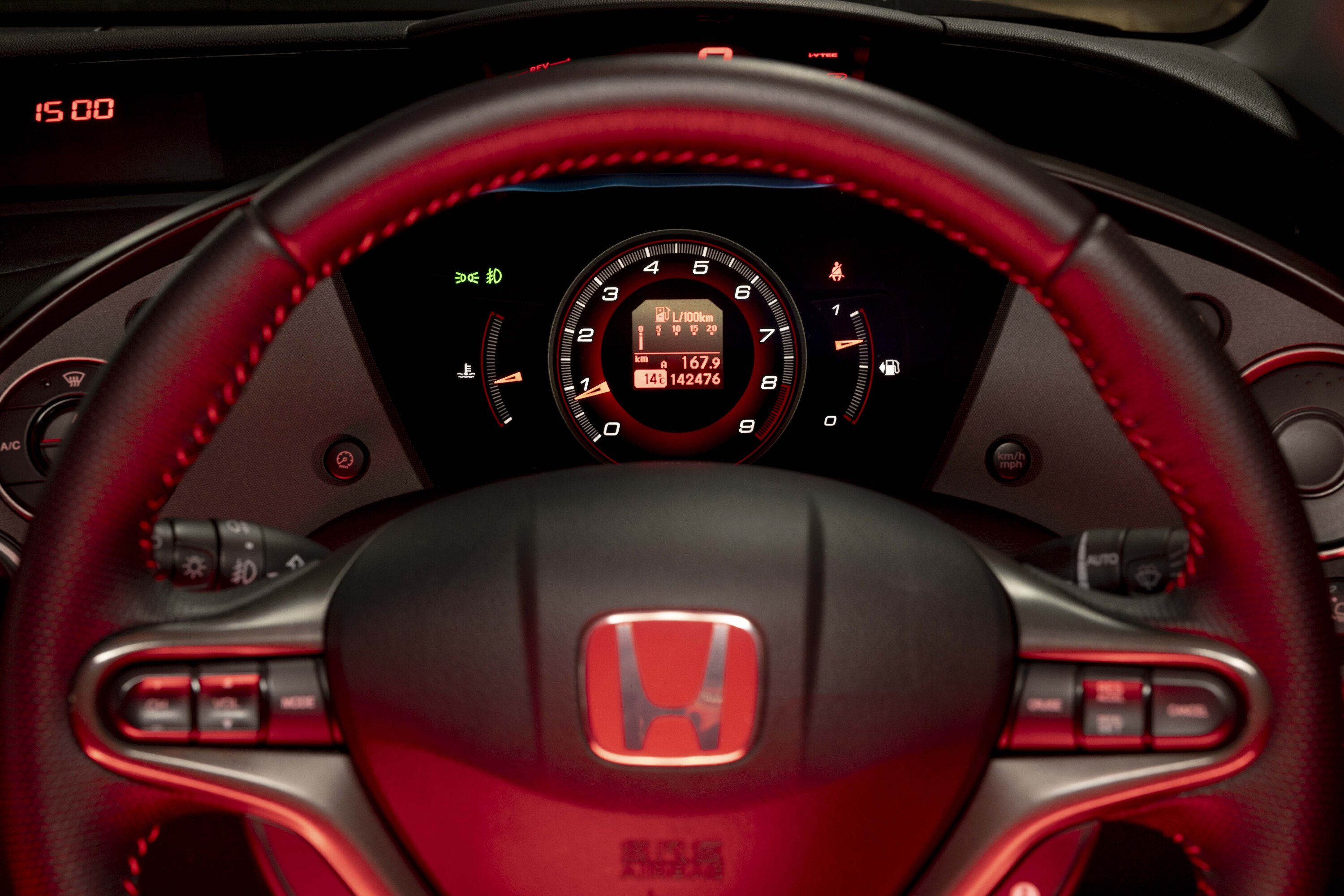
The FN2 certainly came as a shock when it was unveiled at the 2005 Frankfurt Show.
Toshiyuki Okumoto’s design was 35mm shorter and 35mm lower than its immediate predecessor, but it offered a 30mm longer wheelbase and was 65mm wider.
Its compact torsion-beam rear suspension allowed for proper fold-flat rear seats, while space in the rear was helped by relocating the fuel tank to a position beneath the driver’s seat.
Although the Civic clearly benefited from these packaging developments, they didn’t bode well from an enthusiast’s perspective. Indeed, the minimum seat height for the driver didn’t feel particularly sporty, especially when compared to its predecessor, the EP3.
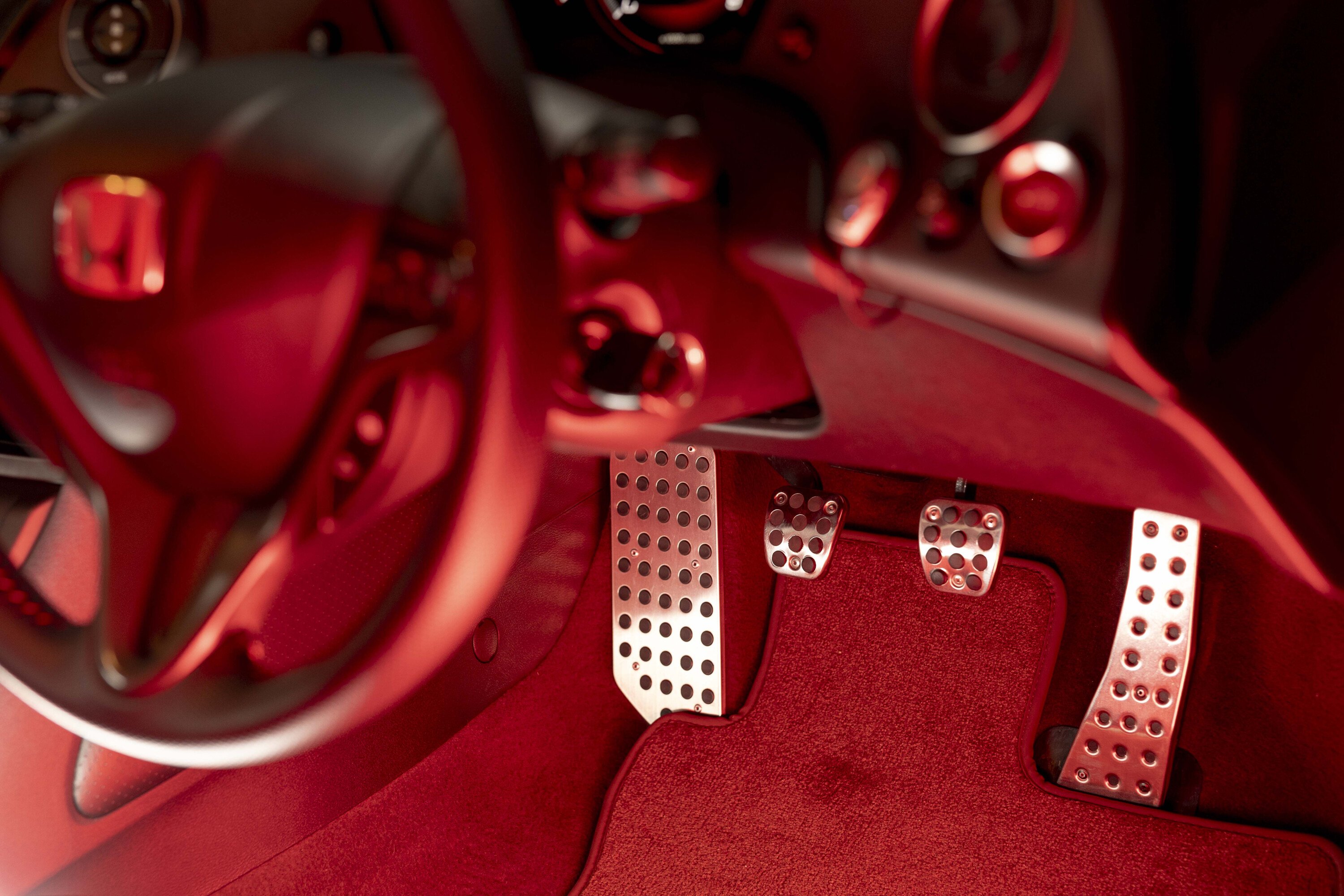
Moving the wheels to each corner also had another effect which wasn’t fully appreciated at the time. The bonnet was shorter and more steeply angled.
In order to comply with pedestrian crash legislation, this limited the available real estate for the front strut assemblies, something we’ll come back to later.
The FN2 Type R launched in 2007 priced at $39,990, Honda quoting a very optimistic 6.6-second 0-100km/h time and a top speed of 235km/h. We took it to the dragstrip on a number of occasions and never managed to dip into the sevens, which means that you won’t choose one of these cars if you’re intent on winning stop-light grands prix.

Supply was initially fairly strangled, with no more than 100 cars a month making landfall in Australia, largely due to an engine production bottleneck in Japan.
At the time, Honda Australia put the power difference between the Australian and JDM versions down to a difference in fuel, but there were significant differences between the engines – the Japanese car featuring revised cams, an RRC intake manifold, higher compression ratio, no balancer shafts and a larger throttle body.
We were offered a colour palette of red, silver or black, and all cars featured red and black cabins with tombstone seats which, annoyingly on a three-door, wouldn’t return to their original position once you’d folded them forward to access the rear. Much has been spoken of the futuristic dash layout, which we all expected to date very quickly.
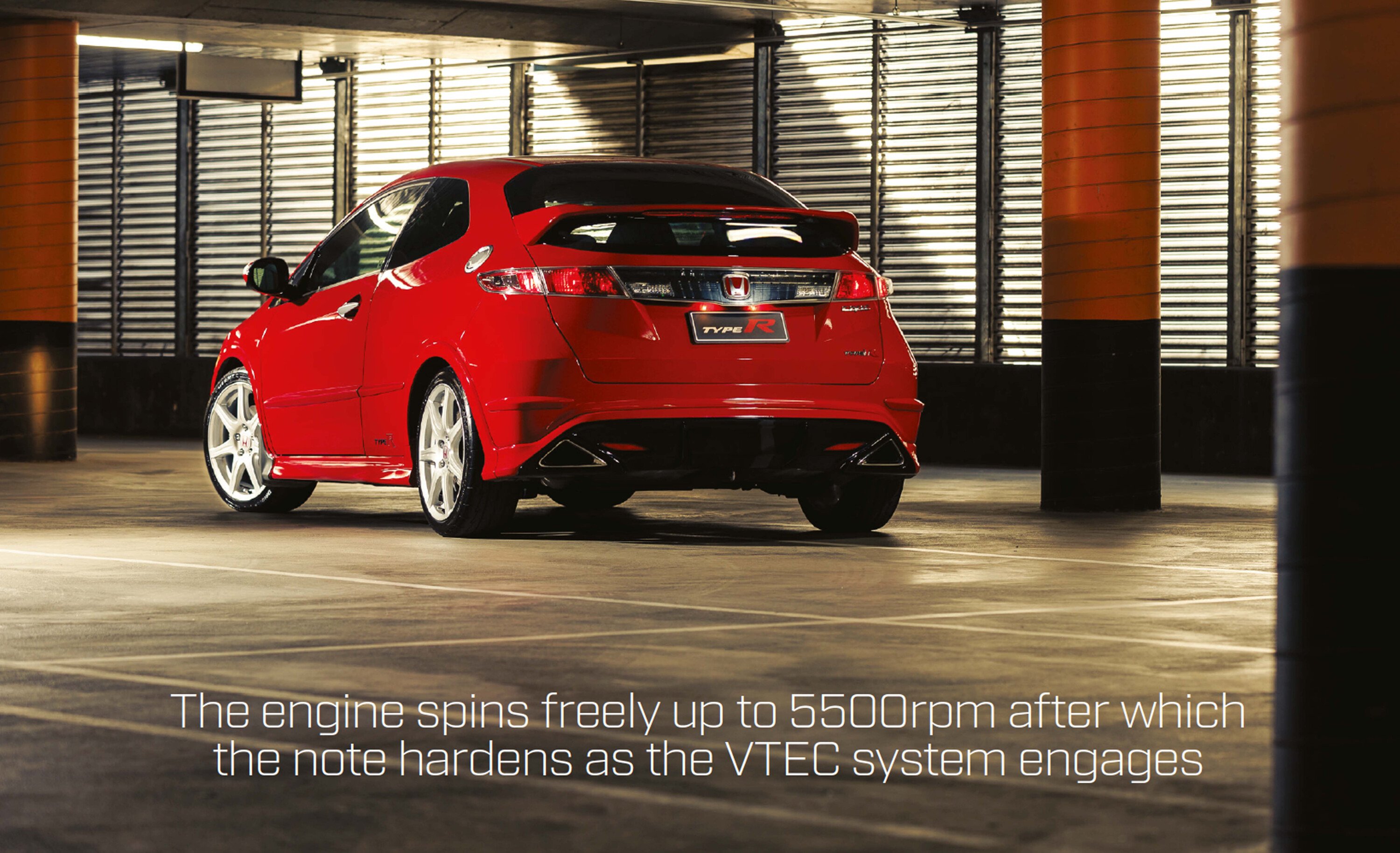
Compared to a Golf MkVI, it looks fresher today, to these eyes at least, but the materials quality inside was probably a notch or two below the vault-like Volkswagen’s.
You’d rather rely on Honda mechanicals though. The engine spins freely up to 5500rpm, which is where the note begins to harden and the VTEC system engages through to the 8000rpm redline. Unlike the EP3, the FN2 is equipped with an OBDII port, which helps with remapping.
A common modification is to bring down the VTEC switchover to somewhere just north of 4000rpm, which some claim improves driveability (see breakout below).
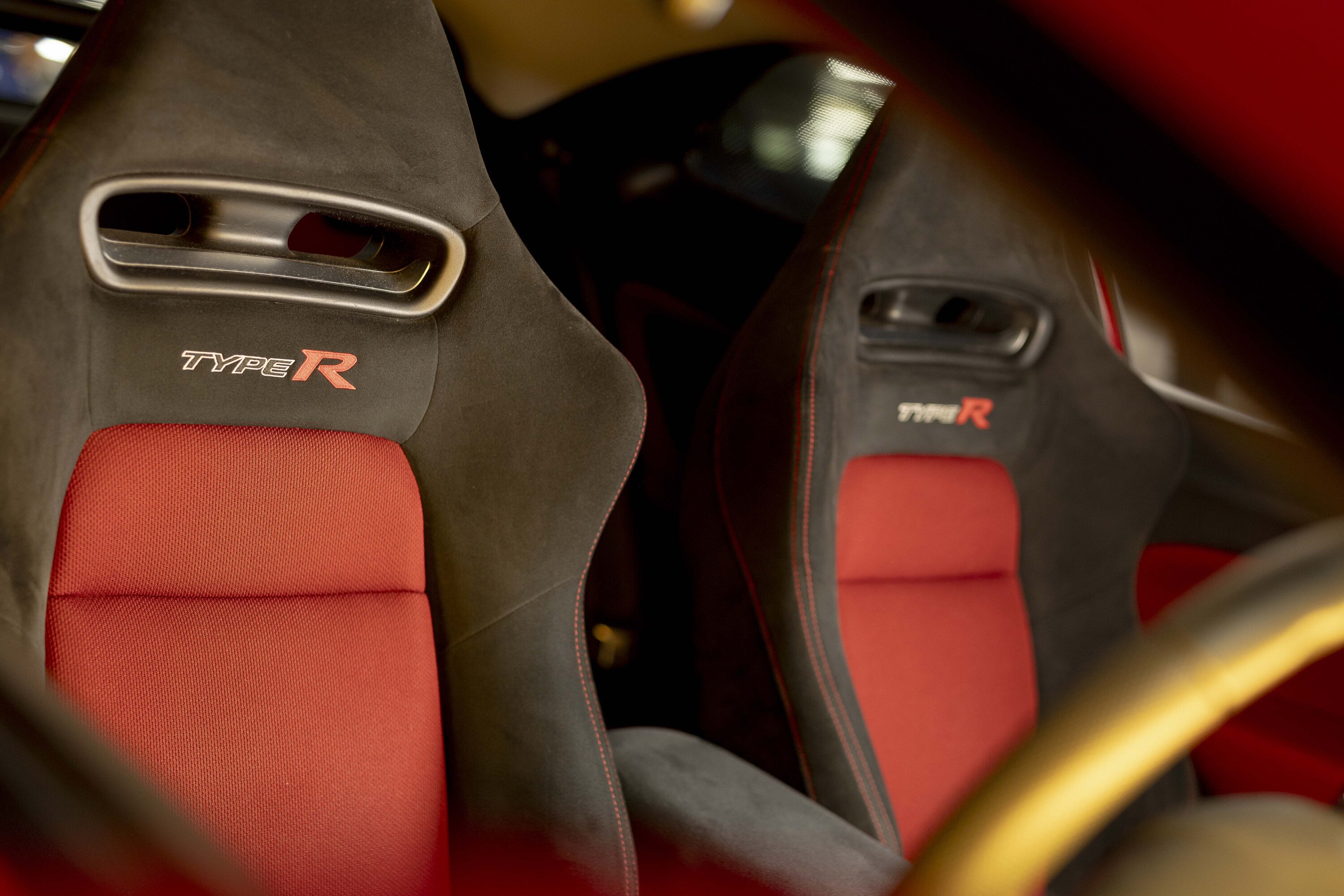
Big power is hard to achieve without either a swap to a 2.4-litre lump or the relatively simple fitment of a Roots-type supercharger. Install either and you’ll also need a limited-slip differential.
But what of that torsion-beam rear suspension? Ah yes, a beam at the back – the hardware choice of notably awful-handling hot hatches such as the Peugeot 308 GTi, Renault Megane RS 275, the Clio 182 Trophy and the Ford Fiesta ST. Note obvious sarcasm.
The torsion beam in the rear of the FN2 certainly did create a significant noise pathway into the one-box passenger cell. The FN2 Type R is undeniably uncouth on coarse-chip surfaces.
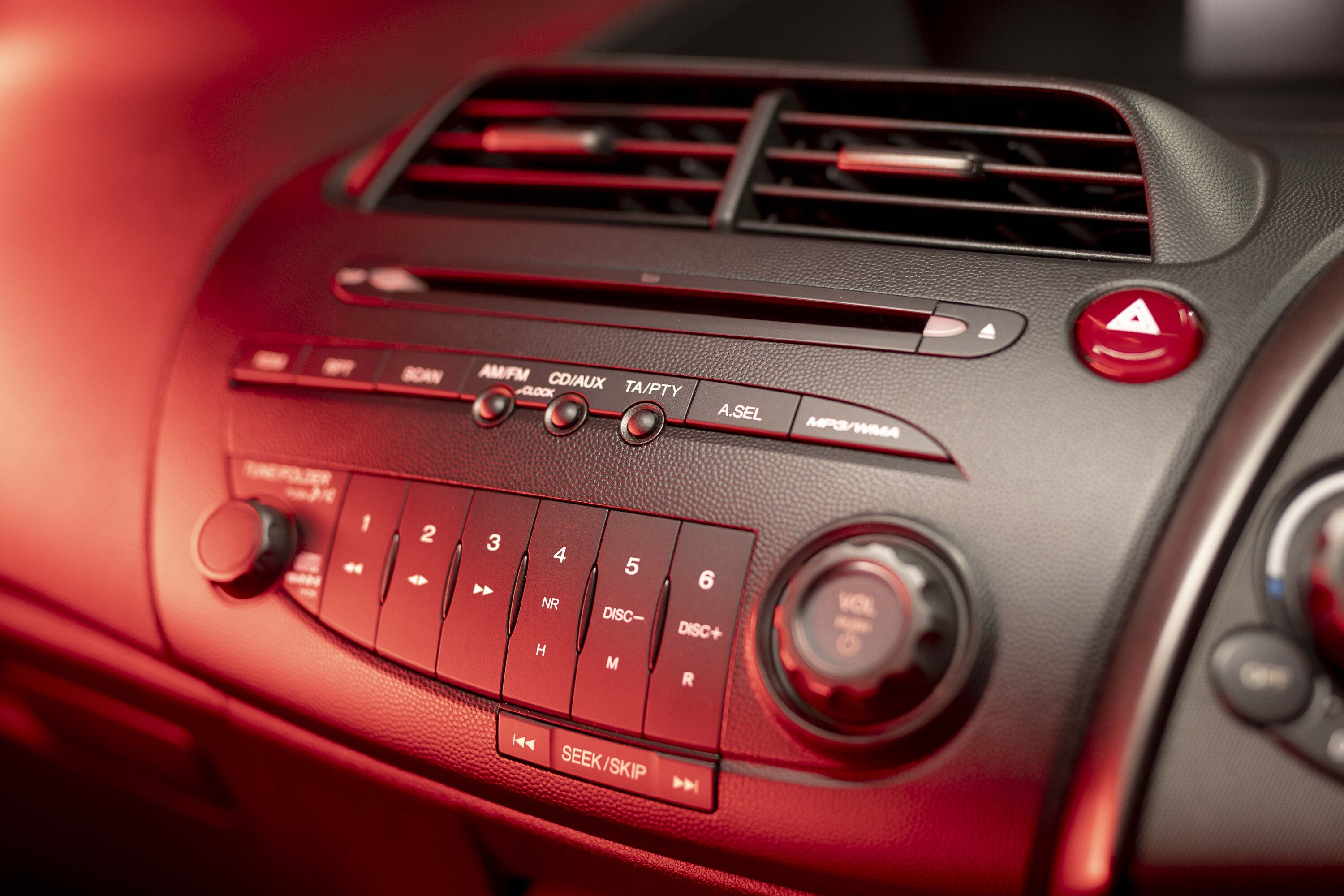
There is another characteristic of the FN2’s handling and that is transient understeer.
Many have attributed this to the torsion-beam rear end, which is nonsense. The culprit is a lack of travel in the front suspension, which results in not only a stiff ride but poor front wheel control, especially on challenging surfaces. Many aftermarket damper options exist (Sachs offers a decent solution) that will fix this particular shortcoming.
Replacing the linear-rate front springs with progressive Eibach items and checking geo will also help. We don’t recommend that you ever increase the wheel size of the FN2 Type R, though. In some markets a 19-inch wheel option was offered, but this changes the ride from merely hard to absolutely wince-inducing.
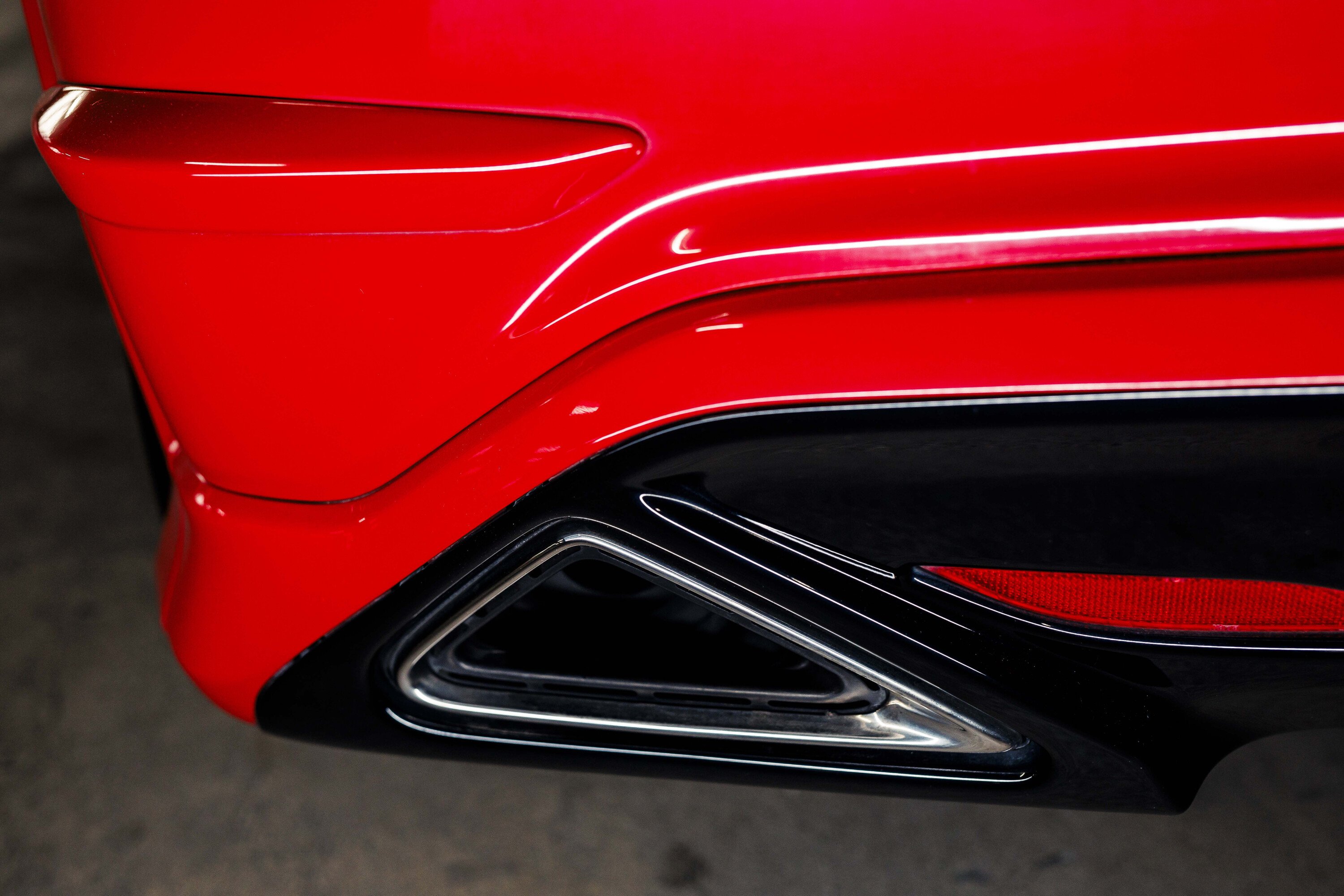
This implementation of a torsion beam does affect handling in extremis. Drive an FN2 back to back with an EP3 down a challenging road and you’ll realise that the older car offers you more options in terms of how you exploit the chassis balance.
You’ll also notice that the lauded EP3 steers considerably more vaguely than the FN2. There’s a decent weighting to the newer car’s electrically assisted rack, even if it’s not the chattiest in terms of detailed feedback.
The lack of a limited-slip differential does make itself apparent when accelerating out of tighter corners or in the wet, when the Type R can bleed torque from its unweighted inside tyre. In 2009, Honda Australia finally offered the FN2 with a helical limited-slip differential, allowing for some superior traction when punching out of a second-gear corner.
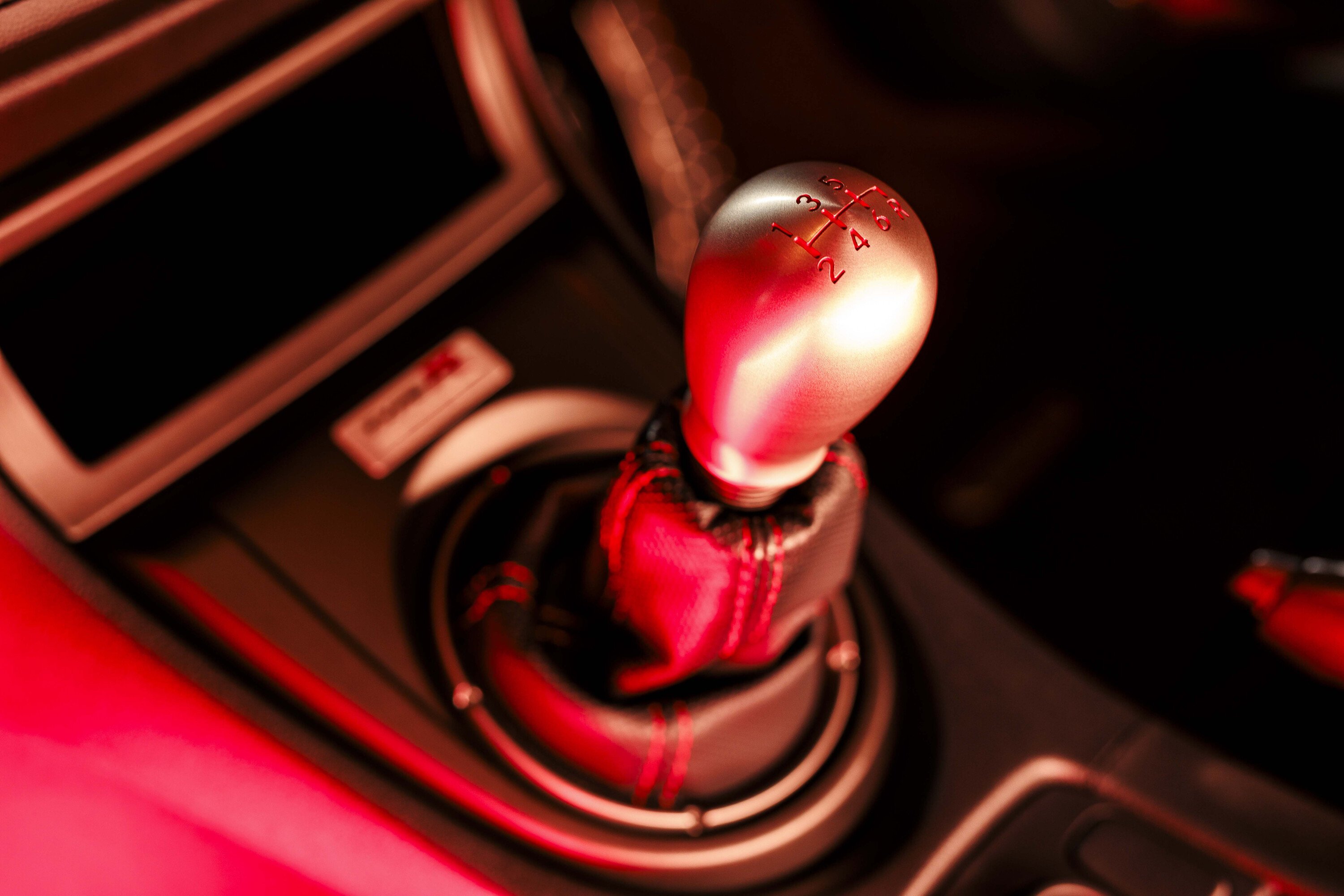
The manual gearshift is excellent, which is fairly surprising given that it’s a cable-shift, which often feel a little more lax than a rod-type set-up. The brakes are respectable for road use, although if you’re planning to track your FN2 you may well want to upgrade.
There’s a decent amount of room in the cabin, although taller drivers will curse the high-mounted seats and shorter drivers will realise that the rear spoiler makes it hard to spot the local constabulary who’ll be attracted to the sound of limiter-bashing, even if flat-chat in second does only translate to 86km/h in this infamously short-geared hatch.
Ownership is generally undramatic. There are a few issues that commonly crop up, such as leaking tailgates, creaking dashboards and soft paint. Worn seat bolsters are a recurrent FN2 issue.
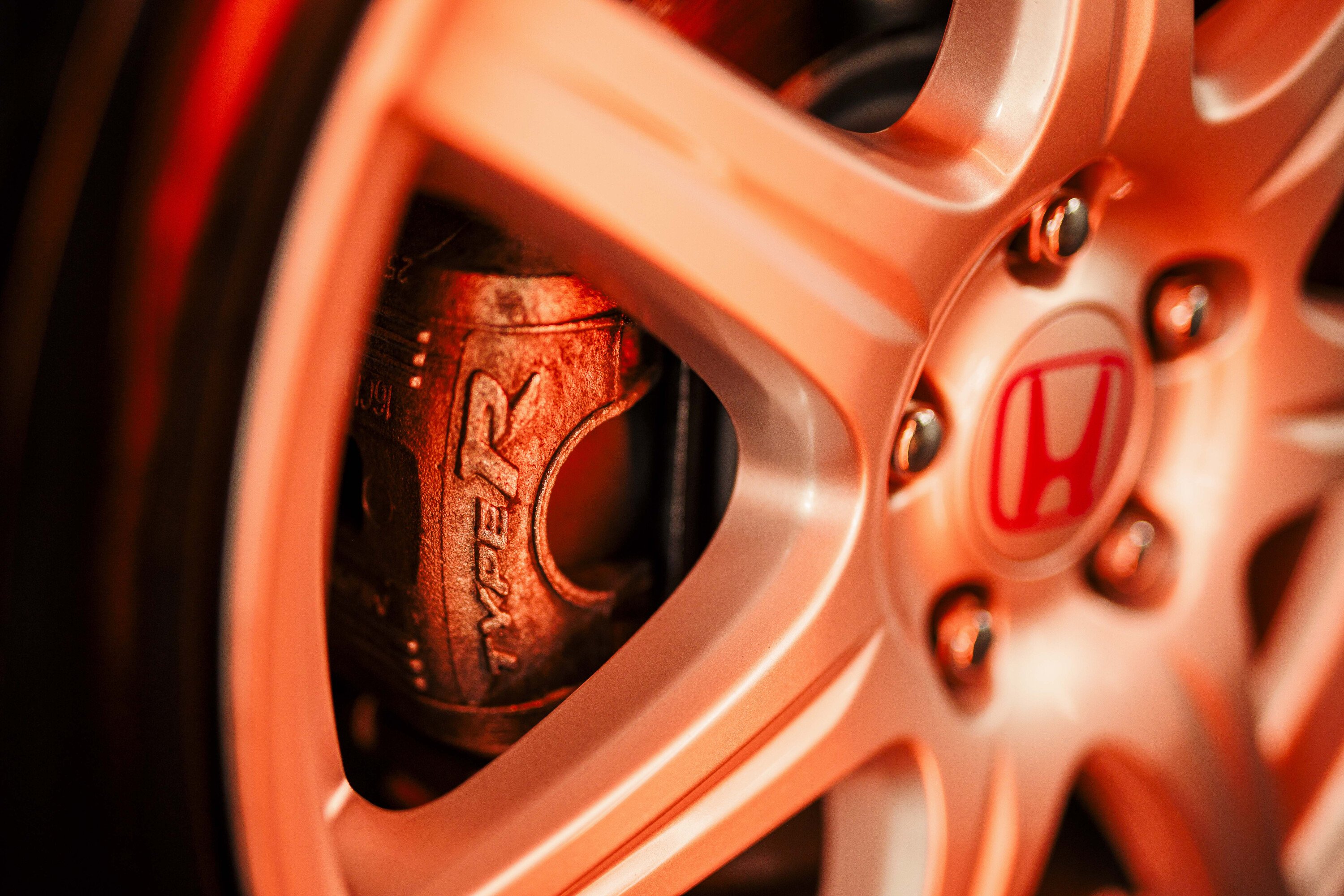
Mechanically, the Type R is robust, but 2007MY cars suffered third-gear synchro issues, which could result in the car jumping out of gear. Squeaking clutch pedals are usually rectified with a squirt of chain lube on the entrance to the clutch master cylinder.
The K20 engine is as near bulletproof as it’s possible to get, and certainly shrugs off hard use and higher miles better than anything you’d find from Renault. Valve clearance need to be checked every 40,000km or so and while the engine uses a rugged timing chain rather than a belt, don’t let that fact lull you into believing that this is not a maintenance part.
Get a gauge on the previous seller by asking about their oil maintenance routine for the car. If they gaze at you blankly, walk away. There’s choice in this market.
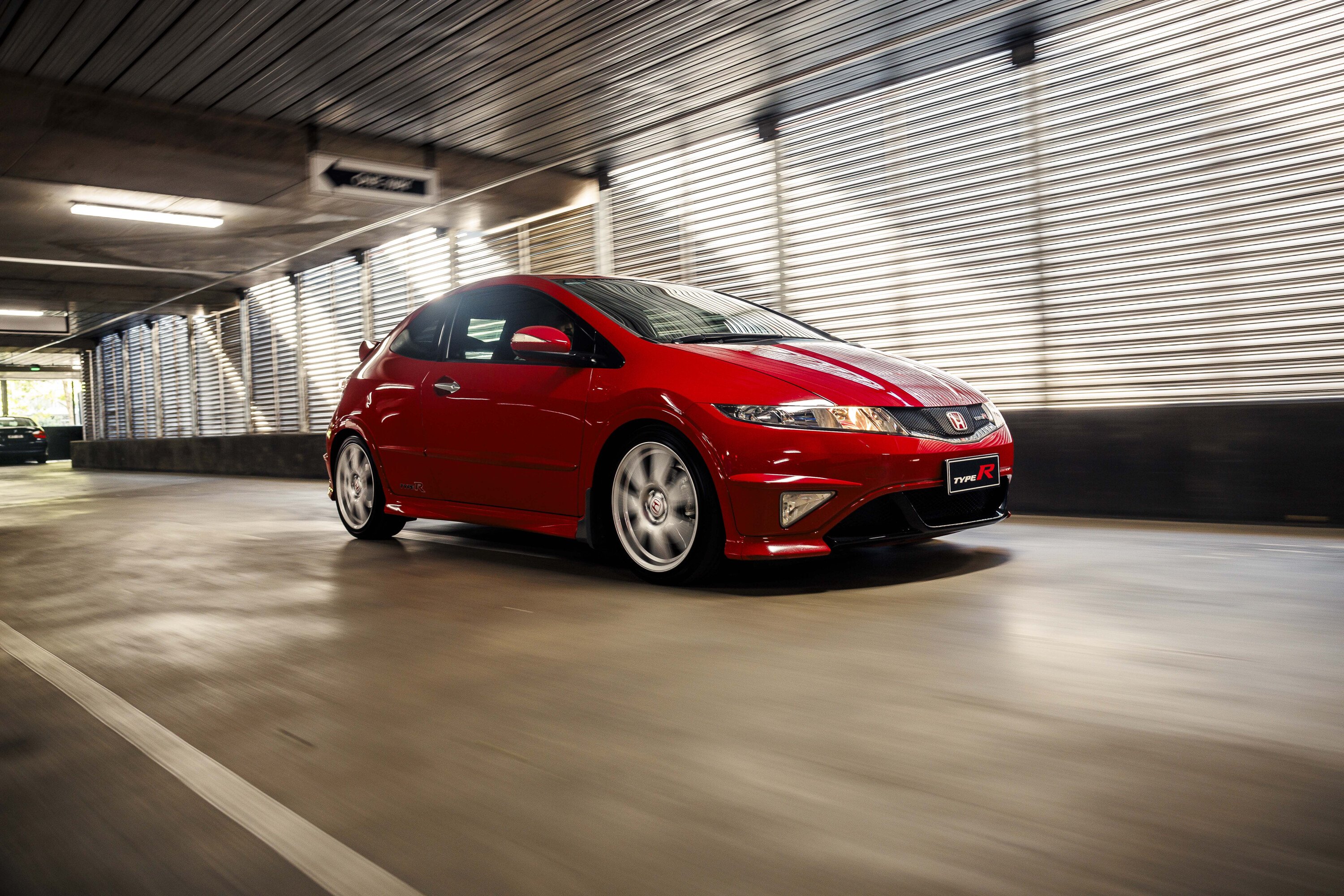
Some owners have taken to fitting 17-inch wheels with 225/45 tyres, often sourcing the wheels from a Mitsubishi Evo (generations 5 to 9 inclusive) to give a little more sidewall compliance.
Others swear by the 15mm spacer kit offered by Eibach to ease the wheels out from beneath the arches a little for a more pugnacious, foursquare stance.
By now you’ll have probably figured out that an FN2 Honda Civic Type R is a car that may well have been misunderstood. It’s also one that rewards a bit of well-informed tinkering. Get one right – you can pick up a very tidy example for somewhere south of $20K – and you’ll have a performance bargain on your hands.
Time has smiled on this hot hatch in a way that initial reviews never did. That can be to your gain. One things’s an absolute certainty. They’re never going to make one quite like this again.
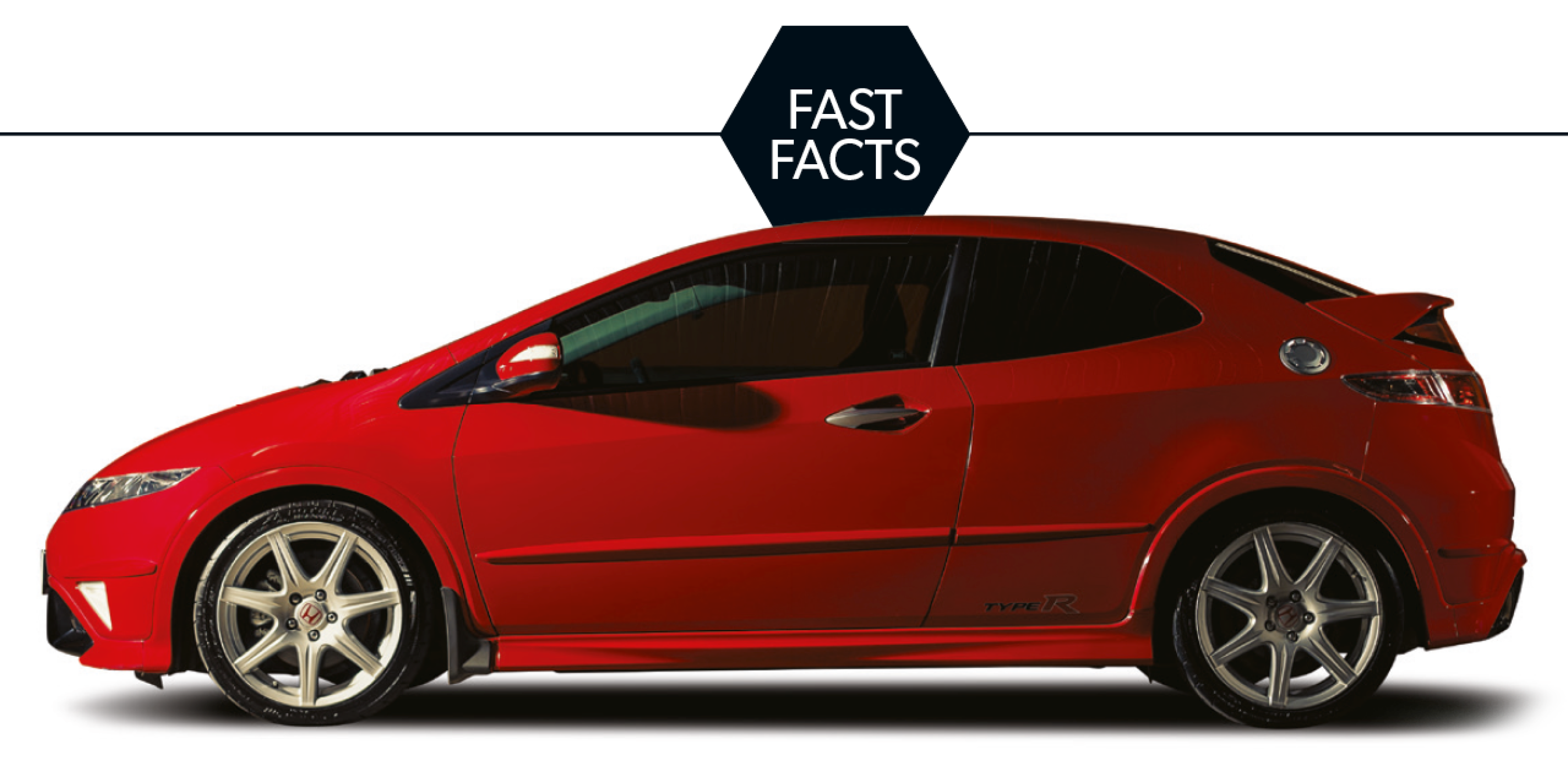
At first it seems a bit of a no-brainer.
Some simple recoding with a laptop plugged into the OBDII port of the FN2 Civic Type R can bring down the VTEC changeover point from 5500rpm to somewhere a bit more accessible.
Like most things, if they seem too good to be true, they usually are. Honda engineered the VTEC switchover to take advantage of the relative power/torque responses of both the low- and high-lift cam profiles. Lower that crossover and you’ll drop into a monstrous torque hole that’ll make your Civic slower, rather than quicker.
Some owners have reported that their VTEC crossover point is around 5800rpm, but while the engines of the FN2 are pretty metronomic, it seems that rev counters can be comparatively errant.
| 2007 Honda Civic Type R FN2 specifications | |
|---|---|
| Model | Honda Civic Type R FN2 |
| Engine | 1998cc 4cyl, dohc, 16v |
| Max power | 148kW @ 7800rpm |
| Max torque | 193Nm @ 5600rpm |
| Transmission | 6-speed manual |
| Weight | 1345kg |
| 0-100km/h | 6.6sec (claimed) |
| Price (now) | from $12K |
We recommend
-
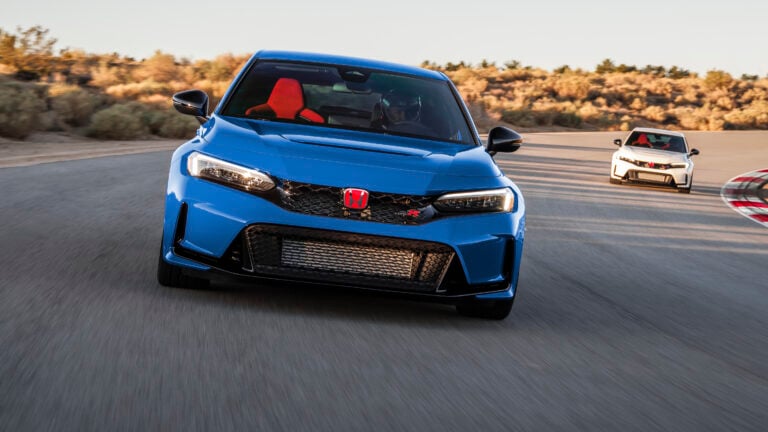 News
News2023 Honda Civic Type R Australian pricing and timing confirmed
Honda Australia confirms drive-away pricing, and the expected local arrival, for its hotly anticipated 2023 Civic Type R
-
 News
News2023 Honda Civic Type R wait times cut by ‘up to nine months’
Honda’s Aussie arm has managed to secure an extra 500 examples of the Civic Type R
-
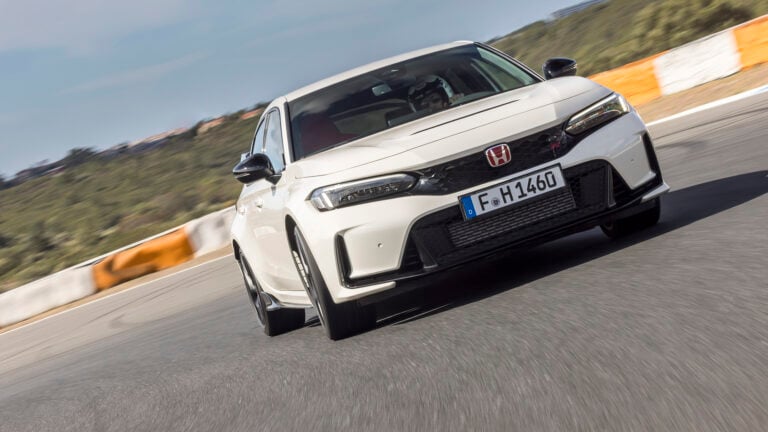 Reviews
Reviews2023 Honda Civic Type R review: New hero driven on road and track
Honda's new Civic Type R is better than its predecessor in just about every way, but is it worth the big asking price? Angus MacKenzie puts it to the test


